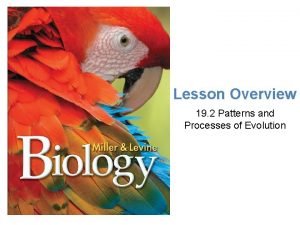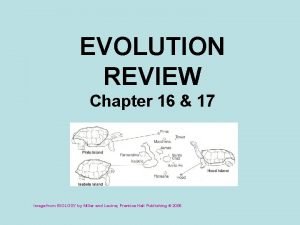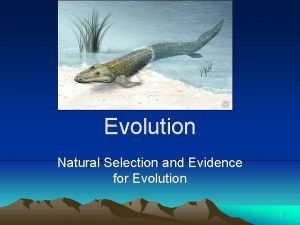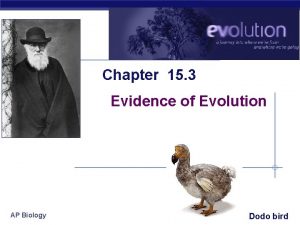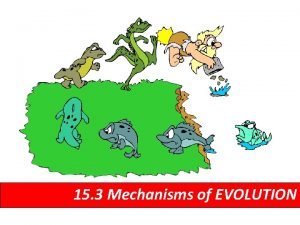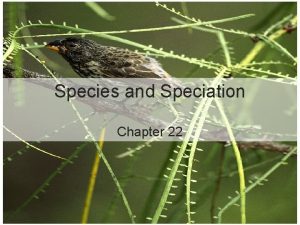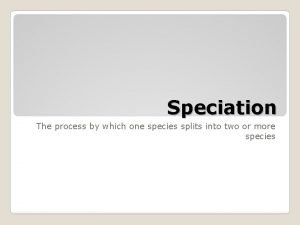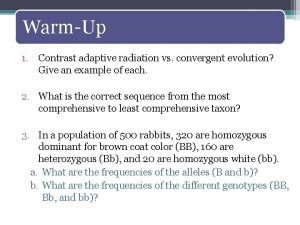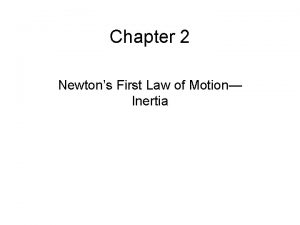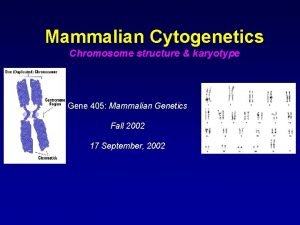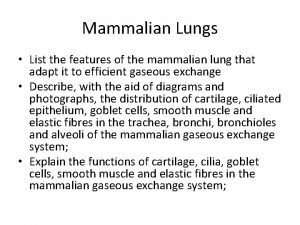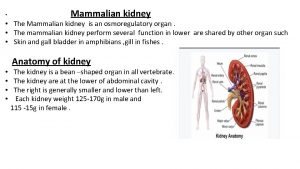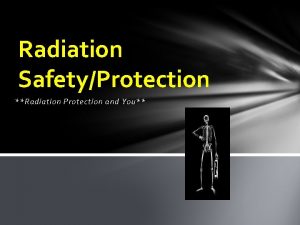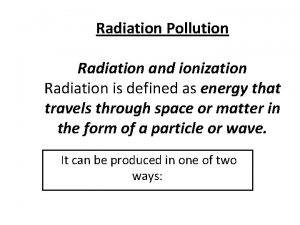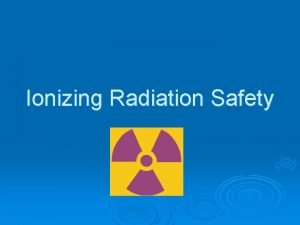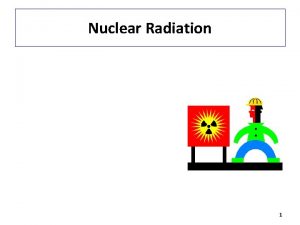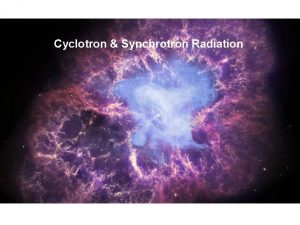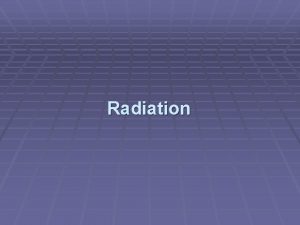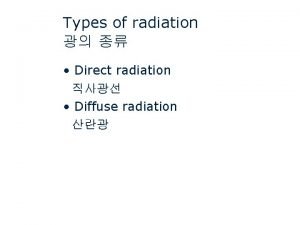WHAT FAVORED MAMMALIAN ADAPTIVE RADIATION AND WAS IT

















- Slides: 17

WHAT FAVORED MAMMALIAN ADAPTIVE RADIATION AND WAS IT ALREADY HAPPENING BEFORE THE ASTEROID IMPACT? Lehra Bogino, Justin Drake, Kellie Snooks

Adaptive Radiation Adaptive radiation is the evolution of an animal or plant group into a wide variety of types adapted to specialized modes of life.

Characteristics of Mammals are defined as any member of the class of warm-blooded vertebrates having four limbs, feminine milk-secreting glands, and the presence of hair at some stage of development.

Evolution of Mammals Permian Period (approximately 270 mya) True mammals were not yet in existence, but their predecessors Synapsids were. Synapsids, more specifically the order Therapsida, which included mammal like reptiles that walked on four legs, diversified and spread during this period giving rise to the first true mammals.

Following the Permian Period Diversification of the Therapsids began to occur at the second half of the Triassic to the early part of the Jurassic periods. Small mammals (described as shrew like) thrived while dinosaurs still lived during the Jurassic Period.

First Mammals During the mid-Jurassic period Therapsids had evolved many mammalian traits that further evolved with their descendants. Hadrocodium- had a large brain and advanced ear structure but still remained small in size. Being warm blooded allowed mammals to hunt at night, avoiding being eaten by their cold blooded predators. During this time 10 mammalian lineages evolved and diversified. This included Multituberculates and the predecessors to Marsupials, Monotremes, and Placental Mammals. The Hadrocoduim: It’s sensitive mammalian hearing allowed mammals to thrive to this day.

Mammals in the Cretaceous Period Approximately 65 mya During this period dinosaurs still dominated, while small mammals continued to diversify. When the asteroid struck (K/T Extinction Event) dinosaurs soon after became extinct, therefore mammals with characteristic adaptability had an entire world to fill.

Factors that favored Mammalian Adaptive Radiation Climate Changes Homeothermic Small Size Oxygen

Climate Changes Climate Cooling Climatic and physical changes were happening BEFORE KT extinction long sequence of events Angiosperms Climatic trend + accentuation of seasons = BAD for dinosaurs Physiologically could not handle cooling of environment

Homeothermic Mammals: have hair/fur could hunt at night Possible Theory: Dinosaurs were a mix between endotherms and ectotherms, but more closely related to endotherms Larger size, more costly metabolism, more food needed Food chain disruption

Small Size Small rat to domestic cat size Able to feed on organisms that could protect themselves from KT extinction Lower demands for food Able to burrow

Already happening? Bininda-Emonds and Cardillo Super tree Divergence Rates

K/T Extinction Event

K/T Extinction Event Orange: Marsupials Black: Monotreme All Others: Placental

Net Rate of Diversification Log scale of lineages with extant descendents Speciation and extinction events equal All Mammals Placental Mammals Marsupials

Mammalian Diversification K/T Extinction Event

Referances Bininda-Emonds, Olaf R. P. , et al. The delayed rise of present-day mammals, Nature, 29 March 2007, Vol. 446. No. 7135. P. 507 -512. Luo, Zhe-Xi. Transformation and diversification in early mammal evolution, Nature, 13 Dec. 2007, Vol. 450. No. 7172. P. 1011 -1019. Russell, Loris S. Body Temperature of Dinosaurs and Its Relationships to Their Extinction, Journal of Paleontology, Vol. 39, No. 3 (May, 1965), pp. 497 -501. Strauss, Bob. “The First Mammals – Mammals of the Triassic, Jurassic and Cretaceous Periods. ” About. com. 14 April 2010. <http: //dinosaurs. about. com/od/otherprehistoriclife/a/earlymammal s. htm> Sudhir Kumar & S. Blair Hedges. A molecular timescale for vertebrate evolution, Nature, 30 April 1998, Vol. 392. P. 917 -920.
 Favored liberty, equality, and brotherhood
Favored liberty, equality, and brotherhood Lesson 17 patterns and processes of evolution
Lesson 17 patterns and processes of evolution Is adaptive radiation divergent evolution
Is adaptive radiation divergent evolution Divergent evolution vs adaptive radiation
Divergent evolution vs adaptive radiation 3 types of natural selection
3 types of natural selection Is adaptive radiation divergent evolution
Is adaptive radiation divergent evolution Example of parapatric speciation
Example of parapatric speciation Lehra bogino
Lehra bogino Adaptive radiation
Adaptive radiation Adaptive radiation
Adaptive radiation Adaptive radiation
Adaptive radiation Peppered moth
Peppered moth Esma i seba
Esma i seba Adaptive radiation
Adaptive radiation Adaptive radiation
Adaptive radiation Adaptive radiation vs convergent evolution
Adaptive radiation vs convergent evolution The favored technique for resolving conflict is *
The favored technique for resolving conflict is * Science greatly advanced when galileo favored
Science greatly advanced when galileo favored

